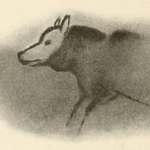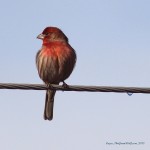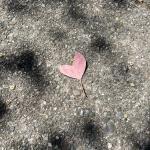Here is the last of the DIY Autumn Adventures series. The topic of this installment will go over how you can make your garden now so it can be as self-caring as possible come spring. It also can turn an energy and resource guzzling lawn into a productive, aesthetically pleasing garden.

We’ll first start with one of the most life giving elements on earth – seeds – and autumn is the most prime time for them and why I affectionately call it seed season.
There are admittedly a number of species missed from early harvest season/ ‘berry season’ – but the majority of seeds are available around now.
If you are already keeping a garden it is a good idea to let some of each of your produce go to seed. Not only do you end up saving money from not having to purchase seed in pre-spring, but you are utilizing natural selection. Each year you keep what produces and each year following you end up growing produce that is more and more adapted to your region. This is what is called a Landrace – a species that developed based upon its success in your region. By collecting a large amount of seed you can become more selective in your personal preferences – saving some of the landrace as insurance, and testing out flavors and creating your own heritage breeds.
If you don’t have a garden, but have as much as a sliver of land that you can manipulate, you can have an outdoor garden and you can get started this autumn too. (If you don’t have land but have enough space in your apartment/other dwelling and enough sunlight, you can alternatively have an indoor potted garden.)
One way of going about having seeds is to go around to farmer’s markets and community gardens and ask about getting some seed off of people. Another way is to get the produce from the farmer’s market, eat it, and collect its seed; or for root veg, plant the eaten root stub in a pot indoors, or place end in water dish, so that the growing end is in open air; or for more potato-like veg place its uneaten hide on it’s side half buried in moistened soil/sand/paper in a pot indoors. These food bits will start rooting, and when they do, plant them in a larger pot so that the rooting side is in the soil and the tip top remains exposed. Other than the potatoes, most all other food scrap plants will only produce seed. It is from these seeds that you can grow food producing stock. You can also refer to an earlier DIY Autumn Adventures post to learn how to grow your own fruit trees from the stems of the fruiting trees in your area.

For domestic and wild stock alike you can gather seeds according to their type. Some plants grow flowers that become seed heads, some have pods that go brown and dry, some grow more potatoes, others have nuts or fruit. To collect from seed heads you can put a paper bag over the end and rough the seed head up a little and remove the bag open end up. The beans only require patience until brown and dry, then you only need to crack them open, let them dry further (if needed), and store. For potatoes you could either leave them in the pot or take out and leave out some to dry a bit then store in cool dark place. Nuts are already ready as they are. For fruit – enjoy its tasty goodness pop out the seeds and lay them out in an open dry area to dry (some prefer to use paper to help it along).

Now for the next step, not only do most plants produce their seed this time of year, it is also the prime time to plant a great many of them, unlike what most seed catalogs would have you believe (unless of course they are not native or unable to live through the dormant or dry period in your growing zone).

These great many perennial natives, and non-native growing/hardiness zone species ability to survive in your region makes for a lot less maintenance from the gardener and the garden mostly cares for itself. Not to mention saving money (shh, don’t tell the catalogs). A lot of these seeds would otherwise have to go through an involved prep phase and normally are before being packaged and sold to you for spring planting. As it is, it is mostly only the fruit that need some prep, treating it as if it had moved through the digestive tract, since we don’t leave our droppings out in the opening in such a way that would germinate the seed as it had evolved to do. The rest just need to be planted for the dormant period to do the prep – just as these seeds had evolved to do. In other words, working with how nature works (removing human intervention as much as possible) instead of forcing it to work when we want it to which takes a lot more of our time and energy.
There should probably be a mention on invasive species. For that, go to your regional natural resource or agricultural website or office and inquire on what species should be avoided. This topic in itself could become a post on its own (what makes an invasive, invasive; natural selection/evolution with migration throughout history continues today; niche species ill adapted to change in its environment would have likely died out eventually, as is seen throughout history; How macro species are negatively impacted (often only temporarily on a larger timescale than a few years, but not always), while micro soil species are positively impacted (studies so far indicate that this is usually the case); how ecosystems favor succession (essentially reforestation), and invasives tend to make that shift faster; how every attempt to remove an established species is more damaging than helpful – and end up failing anyway; That prevention is the best approach, etc.) so for now I will leave it at that.
When gathering seeds it is important to note which plant these seeds came from and store them in such a way that doesn’t mix them up. That way you can make sure each species is planted so that it gets what it requires to thrive, and plants can require a wide range of things that make up its ideal habitat. That is why they grow where they grow after all.
An alternative approach, when harvesting wild stock, is to note what kind of soil this plant was growing in in the first place and try to choose or recreate that soil type in your garden. The soil type can easily indicate what kind of moisture level it requires – the sandier, the more drainage and dryer the plant likes; the more clay, the less drainage and more moisture the plant likes; then there are parts in between.
All that’s left to make note of for your plant’s needs is the amount of sunlight, which is as easy as taking a look around where the plant is and seeing how much equatorial exposure it has. For borealis (the northern hemisphere) that means southern exposure, and for australis (the southern hemisphere) it means northern exposure. Alternatively you could consider the polar exposure it has – for borealis that would be north, and for australis that would be south. If it has polar exposure but no equatorial exposure it means that it prefers cool and shade. Vice versa with equatorial exposure and no polar exposure then it loves heat and sun. And as with the soil there are parts in between. Again you can choose to place your seeds in or try to recreate that kind of light environment for your plants.

Now with all that said and done, the hands in the dirt part! The easiest and simplest thing you can do is make a hugelkultur (‘mound culture’: a mound made of logs covered in a thick layer of dirt – the whole thing itself can optionally be in a ditch for added moisture retention from rains). This is an optimal time of year to create hugelkulturs too, as it is when there are plenty of yard clippings and leaves that are freely available to use. If you make this mound 6ft tall you end up with a completely self-sustaining system – no irrigation needed and no need to add fertilizers. With a smaller mound, say 2ft tall, you can go for three weeks without having to water it in a dry spell. Having a tall mound has a number of benefits outside of its irrigation and fertilizing properties: It can be a privacy/sound barrier, it prevents needing to bend over when harvesting, and it can be laid out in a configuration that can recreate the environmental needs of virtually every kind of plant that can grow in your zone – it could even create a micro-climate for just out of zone species.

Depending on your plant needs you can configure your hugelkultur into differing shapes such as a polar-shade facing U that encourages a cooler micro climate (ideal for shade loving plants just outside your growing zone that would otherwise find your growing zone too hot), or a sun-trap equatorial facing U that encourages a hotter micro climate (ideal for plants just outside your growing zone that prefer a hotter environment). Higher up on the mound for drier/drainage loving plants, and the bottom of the mound for wet loving plants. Hugelkultur beds could also be configured to be north-south orientated rows to allow for maximum sunlight throughout the day. Or East-West to have a sun loving half and a shade loving half. But the most productive approach is going along the contour of the landscape, with space between rows being dependent on the slope, property size, and land use.
This would incorporate a ditch/swale running along the up slope side of the hugelkulturs (the wood could be piled along contour and the soil to cover it can be from the ditch) and would have periodic long level spillways (can alternatively be stacked stones that allow flow between the gaps, and only go halfway up the mound’s height so it can freely flow during heavy downpours). These spillways ideally would be configured so that the water zig-zags along the landscape – slowing the water down, which prevents flooding, and soaking it into the land, which prevents drought conditions (For more information on water management on landscapes that prevents flood and drought go to “Cultural Quandaries: Water“).

 This type of contour mound system is typically used as a tree growing system for a food forest – the most productive system on earth. Growing your garden like a forest creates self sustaining layers of crop in the same space (herbs, shrubs, trees, vines etc. in same square meter), creates habitat for vulnerable species, prevents flood, drought, and is a carbon and heat sink.
This type of contour mound system is typically used as a tree growing system for a food forest – the most productive system on earth. Growing your garden like a forest creates self sustaining layers of crop in the same space (herbs, shrubs, trees, vines etc. in same square meter), creates habitat for vulnerable species, prevents flood, drought, and is a carbon and heat sink.
The following video shows how a food forest is grown
7 Food Forests in 7 Minutes with Geoff Lawton from Permaculture Research Institute on Vimeo.
The species used in this video are ideal for the location this is filmed in, being in NSW Australia, but the approach is the same worldwide.
The main aspects to remember for starting a food forest is after putting in the hugelkulturs, seed or planting fast growing nitrogen fixing herbs like clovers and alfalfa – also called green manure, then spread a mulching layer of dead tall grass/hay/leaves/other vegetative debris (this prevents rain compaction of the soil, holds moisture in the soil, and prevents evaporation and erosion). Once they are established, seed your nitrogen fixing shrubs and trees – which are typically legumes, but not always – and along with the nitrogen fixers seed or plant your main tree species and preferred herbs. The edge of the food forest is where your more sun loving shrubs and herbs would be established, or the down slope and/or equatorial facing side of the mounds.
Other than a food forest your hugelkultur beds can become a mixed annual and perennial polyculture herb gardens. Polyculture meaning a mix of species instead of one which is more susceptible to environmental stressors. Again this mix should include some nitrogen fixing plants as support species for your main plants. In this approach there is no such thing as weeds, we instead call them volunteers as they too are support species with their own special contributions to the soil ecosystem. If they start over shadowing your preferred species, you chop them at the base then drop them there to mulch down into compost – adding their nutrients to the soil instead of removing it.


For climbing vines in your garden, like pumpkins, tomatoes, and certain beans, you can either grow dwarf fruiting trees as espaliers (becomes a living, food producing trellis), or you can use twine or a regular trellis to maximize use of space. These are what’s called vertical gardens.
Deciduous trees and vines can shade areas during the hottest time of year (depending on the species as some lose their leaves at that time in hotter regions), while allowing sunlight to come through in the cooler times of year, which can be utilized for solar gain (dark surfaces, like stones, gather and store heat that slowly releases during the night and could prevent frost). In hotter regions of the world you could combine the polar facing hugelkultur with tall vegetation that keep their leaves to maintain a consistently cool environment.
With all this, admittedly likely overwhelming, information you can establish a successful garden where ever you are. By looking at the solar orientation of the property, you can determine the layout of the hugelkultures depending on the slope and seeds you have/want to grow. Put in the hugelkultures, seed with the perennial native/climate zone species and support nitrogen fixing species, toss on a layer of dead grass or the currently readily available leaf mulch, and let nature do the rest. Once spring/rainy season arrives you can then add your non-native, non-climate zone species among your native, climate zone species if you desire. (For those in sub-tropical and tropical climate, keep in mind the seasonal variance and ideal planting times that may differ – there are variances that will inevitably be missed in such a summary)
The following two videos are an example of small scale, urban, gardens for food production. One more intensive as a business in the warm climate of California, USA; the other more for self production in the cold climate of Alberta, Canada.
Canada Urban Permaculture Garden from Permaculture Research Institute on Vimeo.
And my very own garden from this year on Manitoulin Island, Ontario, Canada. (if its not animated click to watch)
If you enjoyed this and want to learn more, go to GeoffLawton.com and sign up for free to follow their fantastic permaculture videos that show you more on how to do this and then some.
Happy Gardening!


















